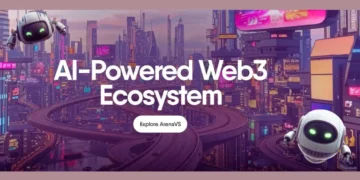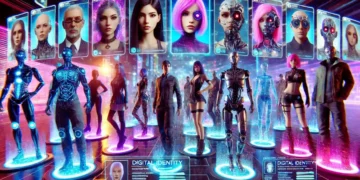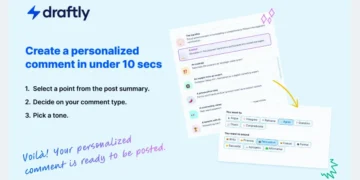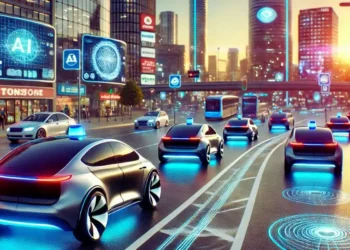The field of artificial intelligence is undergoing a subtle but significant shift. Large language models (LLMs), while powerful, still rely heavily on human guidance. This is where autonomous AI agents come in, offering a new dimension of autonomy and adaptability.
LLMs, such as GPT-3 and GPT-4, are incredibly useful tools but lack the ability to make autonomous decisions. This means that, although they can generate text efficiently, they cannot adapt to changing situations without human intervention.
What are Autonomous Agents
Autonomous agents represent a significant advance in the field of artificial intelligence, especially with regard to large language models (LLMs). While LLMs have proven to be powerful tools for tasks such as text generation, translation and sentiment analysis, their main limitation lies in their lack of autonomy to make decisions and adapt to changing situations. This is where autonomous agents offer a new level of complexity and utility.
An autonomous agent is an artificial intelligence system designed to operate independently, without the need for constant human intervention. These agents are capable of making real-time decisions based on data analysis and machine learning. They also have the ability to adapt to changing scenarios, allowing them to be more resilient and efficient in executing tasks.
Interaction with LLMs
One of the most intriguing applications of autonomous agents is their ability to improve the performance of LLMs. By collaborating in multi-agent conversations, these autonomous systems can provide feedback and reasoning that help LLMs improve their accuracy and efficiency. For example, an autonomous agent could analyze the responses generated by an LLM and offer corrections or suggestions to improve text quality.
Autonomy in Action: Decision Making and Adaptability
Autonomous agents are not only capable of performing tasks independently, but can also make decisions based on a variety of factors, such as historical data, current conditions, and predefined goals. This decision making is performed by machine learning algorithms that allow the agent to evaluate multiple variables and choose the best possible action.
Adaptability is another key feature of these agents. As they collect more data and learn from their interactions, they are able to adjust their algorithms to improve their performance. This is especially useful in dynamic environments where conditions can change rapidly.
The Future of Autonomous Agents
As technology advances, we are likely to see tighter integration between autonomous agents and LLMs. This could lead to more robust AI systems that can not only generate high-quality text, but can also make informed decisions and adapt to new challenges autonomously.
Featured Cases
Here are six autonomous agents that are setting a milestone in the development and application of autonomous artificial intelligence:
1. Microsoft’s AutoGen 2
Key Features: AutoGen facilitates the creation of applications based on large language models, enabling the automation of complex workflows.
Significance: This agent is especially useful for developers looking to simplify and optimize processes. Its ability to support various conversation patterns makes it a versatile tool for a variety of applications.
2. Microsoft MusicAgent
Key Features: MusicAgent specializes in the music domain and can automatically analyze user requests to select appropriate tools.
Significance: This agent represents a breakthrough in automating specific tasks in the music industry, such as instrument selection or score generation.
3. Mini AGI
Main Features: Mini AGI works in conjunction with GPT-3.5-Turbo and GPT-4, using a minimal set of tools and a short-term memory.
Significance: Its simple but effective design makes it an affordable stand-alone agent that can enhance the capabilities of existing large language models.
4. MultiGPT
Key Features: MultiGPT is a multi-agent system that enables collaboration between several “expertGPTs” to perform tasks.
Significance: This collaborative approach could open new avenues for complex problem solving, as it allows the combination of different skills and knowledge.
5. BeeBot
Key Features: BeeBot is an AI assistant designed to automate a wide range of practical tasks and has a REST API that follows a common standard called e2b.
Significance: Its versatility and ability to integrate with different systems and services make it a highly applicable autonomous agent in a variety of contexts.
6. BabyAGI
Key Features: BabyAGI uses OpenAI and Pinecone APIs to manage tasks efficiently, organizing and prioritizing activities based on predefined goals.
Significance: This agent demonstrates how task management can be optimized through the use of artificial intelligence, offering a more structured and efficient approach to task completion.
Each of these autonomous agents offers a unique set of features and capabilities that make them stand out in their respective domains. From automating workflows to specializing in niches such as music, these agents are pushing the boundaries of what is possible in the field of autonomous artificial intelligence.
The emergence of autonomous agents in the field of AI raises fascinating questions about the future of autonomy in AI systems and how this could change our interaction with technology.
Conclusion
The rise of autonomous AI agents marks a significant shift in the field of artificial intelligence. While large language models (LLMs) like GPT-3 and GPT-4 have been powerful tools, they lack the autonomy to make independent decisions and adapt to changing situations. Autonomous agents, on the other hand, bring a new level of complexity and utility to AI systems.
These agents can operate independently, making real-time decisions based on data analysis and machine learning. They are also adaptable, learning from their interactions and adjusting their algorithms to improve performance in dynamic environments. Moreover, autonomous agents have the potential to enhance the performance of LLMs by collaborating in multi-agent conversations, providing feedback and reasoning to improve text quality.
The future of autonomous agents is promising, with the possibility of tighter integration with LLMs. This could lead to more robust AI systems capable of both generating high-quality text and making informed decisions autonomously. As technology advances, the applications and implications of autonomous agents in various industries and domains will continue to evolve.
FAQs
1. What are autonomous agents in the context of AI?
Autonomous agents are artificial intelligence systems designed to operate independently, without constant human intervention. They can make real-time decisions based on data analysis and machine learning and adapt to changing scenarios, making them more resilient and efficient in executing tasks.
2. How do autonomous agents interact with large language models (LLMs)?
Autonomous agents can collaborate with LLMs in multi-agent conversations. They provide feedback and reasoning to improve the accuracy and efficiency of LLMs. For example, they can analyze LLM-generated responses and offer corrections or suggestions to enhance text quality.
3. What is the significance of autonomy in AI agents?
Autonomy allows AI agents to make decisions and adapt to changing conditions independently. This is crucial for tasks in dynamic environments where human intervention may not be practical or efficient.
4. What is the potential future of autonomous agents in AI?
The future of autonomous agents is likely to involve tighter integration with LLMs, resulting in more robust AI systems capable of generating high-quality text and making informed decisions autonomously. This integration could revolutionize various industries and domains.
5. Can you provide examples of autonomous agents in AI?
Some examples of autonomous agents include Microsoft’s AutoGen 2, MusicAgent, Mini AGI, MultiGPT, BeeBot, and BabyAGI. These agents have unique features and capabilities that cater to various applications, from automating workflows to specialized tasks in the music industry.
6. How are autonomous agents changing our interaction with technology?
The emergence of autonomous agents in AI raises questions about how technology interacts with humans. These agents offer greater autonomy and adaptability, potentially reducing the need for human intervention in various tasks and providing more efficient and reliable solutions in different domains.
Follow us on our social networks and keep up to date with everything that happens in the Metaverse!
Twitter Linkedin Facebook Telegram Instagram Google News Amazon Store












































